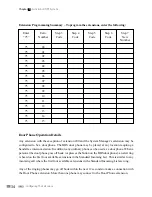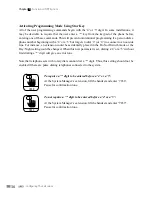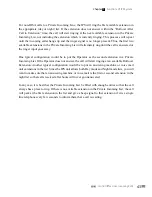
46
Central Offi ce Lines – Programming
Choices In Confi guring Central Offi ce (CO) Lines
Each CO line should be con
fi
gured so that it best suits your needs. The options that must be
decided upon are described below.
1. Do you want to dial ‘9’ or ‘0’ to access an outside line ?
You can choose either ‘9’ or ‘0’ as the code for user to dial when requesting an outside line.
2. Are you using this CO line ?
If you do not use all of the CO line ports of the system, then the vacant ports need to be
programmed as “Disable”. This will make sure the IPS does not allow any extension to
connect to this line.
3. How should an incoming call be answered ?
If desired, you may select DISA (Direct Inward Station Access) for answering incoming calls.
This feature is also called Auto-Attendant mode. In this mode, the IPS will answer (Day and
/ or Night) and prompt the incoming caller to enter the digits or code of the desired extension
or department that they wish to speak with. It is suggested that you read more about DISA on
page 37 and 50 before selecting this feature so as to better understand its function.
If you choose to use the line so that calls must be answered by an extension before the outside
line is seized, then you will need to enter the code for “No DISA”.
4. Does your CO line accept tone (DTMF) or pulse (rotary) dialing ?
Some older Central Of
fi
ce switches can interpret only pulse or rotary dialing. Most newer
Central Of
fi
ce lines can accept tone or DTMF (Dual-Tone Multi-Frequency) dialing. The IPS
will need to know how it should dial digits when it is dialing a speed dial number or redialing
the last number dialed. See “Tone or Pulse Dialing Details” on page 65 for a complete
discussion of the dialing mode.
5. Do you want to be able to send a “switch-hook” to the CO line ?
Some Central Of
fi
ce features, such as Call Waiting, are enabled by sending a “Switch-hook”
or “Flash” to the Central Of
fi
ce. Some Central Of
fi
ce switches will reset the CO line and
give a new dial tone in response to a Flash signal. If a new dial tone is given, the caller could
bypass the Call Barring (Toll Restriction) protection as the system would not know that a new
dial tone was received. If this is a consideration, you may wish to disable the sending of the
“Switch-hook” signal to the CO line.
Central Offi
ce Lines- Programming
















































